 December 5, 2019 John E. Ross, KD8IDJ, Editor
| ||||||
ARRL to Oppose Proposal to Eliminate 3.3 - 3.5 GHz Amateur Allocation At its December 12 open meeting, the FCC will consider adopting a Notice of Proposed Rulemaking (NPRM) that proposes to remove the amateur radio 9-centimeter allocation at 3.3 - 3.5 GHz. ARRL plans to comment in opposition to the proposed action. According to an FCC "Fact Sheet," the proceeding WT Docket 19-348, "Facilitating Shared Use in the 3.1 - 3.55 GHz Band," is a follow-on from the MOBILE NOW Act, approved by the 115th Congress, which requires the FCC and the US Department of Commerce to make available new spectrum for mobile and fixed wireless broadband use. It also requires the FCC to work with the National Telecommunications and Information "This Notice of Proposed Rulemaking would propose to remove the existing non-federal allocations in the 3.3 - 3.55 GHz band as a step towards potential future shared use between federal incumbents and commercial users," the FCC Fact Sheet explains. "By taking the initial step needed to clear the band of allocations for non-federal incumbents, the Commission furthers its continued efforts to make more mid-band spectrum potentially available to support next generation wireless networks." The NPRM proposes to clear the 3.3 - 3.55 GHz band of existing non-federal users by removing non-federal secondary radiolocation and amateur allocations [emphasis added] in the 3.3 - 3.55 GHz band and to relocate incumbent non-federal users out of the band. The FCC would seek comment on relocation options and "transition mechanisms" for incumbent non-federal users, either to the 3.1 - 3.3 GHz band or to other frequencies. Regarding the Amateur and Amateur-Satellite Service allocations, the FCC NPRM asks whether existing amateur spectrum in other bands might support operations currently conducted in the 3.3 - 3.5 GHz band. The 3.40 - 3.41 GHz segment is designated for amateur satellite communication. "We seek comment on the extent to which the band is used for this purpose, whether existing satellites can operate on other amateur satellite bands, and on an appropriate timeframe for terminating these operations in this band," the FCC NPRM says. Also at its December 12 meeting, the FCC will consider another NPRM in WT Docket 19-138 that would "take a fresh and comprehensive look" at the rules for the 5.9 GHz band. The amateur radio 5-centimeter allocation is 5650.0 - 5925.0 MHz, and the NPRM, if approved, would address the top 75 MHz of that amateur secondary band. ARRL will also file comments opposing any changes affecting the 5-centimeter amateur allocation. Both draft FCC proposals are subject to change prior to a vote at the December 12 FCC meeting. Read more. President Rick Roderick, K5UR, Heads ARRL Group on FCC Visits President Rick Roderick, K5UR, and members of the ARRL Board's Executive Committee undertook a round of visits to FCC Headquarters in Washington on November 4 and 5. Topics focused on a number of pressing amateur radio-related issues. In addition to Roderick, members of the ARRL contingent included Atlantic Division Director Tom Abernethy, W3TOM; New England Division Director Fred Hopengarten, K1VR; Roanoke Division Director Bud Hippisley, W2RU; West Gulf Division Director John Robert Stratton, N5AUS, and ARRL Washington Counsel David Siddall, K3ZJ. Digital Data Symbol Rate Proceeding The ARRL delegation emphasized the overwhelming support for and need to remove symbol rate limits from the amateur rules, contending that the limits are outdated, no longer serve their original purpose of limiting signal bandwidth, and inhibit experimentation and development of digital communications techniques. Removing these limitations would also allow US radio amateurs to join those in other countries in using methods not permitted in the US. In 2016, the FCC had responded to ARRL's petition for rulemaking (RM-11708) by proposing no bandwidth limit. The ARRL delegation reiterated that adopting a 2.8 kHz maximum bandwidth in place of the symbol rate limit would promote sharing and experimentation below 30 MHz.
The ARRL representatives also discussed issues that some have raised -- and on which the FCC did not request comment -- alleging that certain types of digital signals are "encrypted" because they are digitally compressed or otherwise can be difficult to receive over the air. The ARRL group pointed out that the FCC addressed the use of new digital techniques in 1995, amending its rules to authorize new digital techniques without prior FCC approval, as long as these were publicly documented consistent with three techniques specifically approved at the time. Since then, multiple digital methods have been developed and deployed without substantive complaints of insufficient documentation, the ARRL team noted. The prohibition on encryption is a provision of the ITU Radio Regulations and applies worldwide. The FCC regulation prohibiting "messages encoded for the purpose of obscuring their meaning" comes directly from the ITU Radio Regulations, language adopted at World Radiocommunication Conference 2003 (WRC-03) to replace a provision that limited amateur communications to "plain language." Adoption of this change made clear that amateur communications encoded for digital transmission are authorized internationally as long as they're not encrypted. It was noted that techniques some commenters have targeted are widely used by amateurs around the world. 60-Meter Band Allocation ARRL petitioned the FCC in RM-11785 to implement provisions adopted at WRC-15 that provide for a secondary amateur allocation at 5351.5 - 5366.5 kHz. ARRL also proposed that 100 W ERP be permitted on the new band, consistent with that authorized for the current five 60-meter channels. The National Telecommunications and Information Administration (NTIA) has proposed in a letter to delete the existing four channels and substitute a secondary band allocation at a maximum permitted power of 15 W EIRP (9.1 W ERP), as approved at WRC-15. The ARRL delegation expressed concern that NTIA's proposal would require relocation of existing channelized amateur activity to a 15 kHz band at a fraction of the power now authorized, despite an absence of any reported interference on the current channels. ARRL also expressed concern that 9.1 W ERP would hamper emergency communication on the band, especially during hurricane season, when noise levels are usually high. The FCC is expected to issue a Notice of Proposed Rulemaking (NPRM) in December or early next year addressing 60 meters and inviting comments. Amateur Radio Enforcement ARRL Executive Committee members met with FCC Enforcement Bureau Chief Rosemary Harold and her senior staff to discuss amateur enforcement. The delegation updated progress in setting up the Volunteer Monitoring Program pursuant to the FCC/ARRL Memorandum of Understanding (MOU) signed last March. The program is in the final stages of training volunteers and is expected to be brought online in early 2020. Read more. Oldest Known US Ham Receives ARRL Centurion Award The oldest known US radio amateur, Cliff Kayhart, W4KKP, received his ARRL Centurion Award plaque in November. The award
recognizes hams who have achieved centenarian status. Kayhart, who lives in White Rock, South Carolina, is 108. The ARRL Board of Directors conferred the award on Kayhart at its July 2019 meeting. At the November meeting of the Dutch Fork Amateur Radio Group in Little Mountain, South Carolina, ARRL Roanoke Division Director Bud Hippisley, W2RU, headed an ARRL delegation that presented the Centurion Award plaque to Kayhart, who was first licensed as W2LFE in 1937 (he's also held W9GNQ). With Hippisley for the presentation were Roanoke Division Vice Director Bill Morine, N2COP, and South Carolina Section Manager Marc Tarplee, N4UFP. Kayhart served in Iwo Jima during World War II, shortly after the US victory there, setting up long-range radio communication from the island to Tokyo to arrange for the eventual surrender by Japan. Kayhart remains active, checking into several nets from his assisted living facility. Centurion Award recipients have their annual ARRL membership fees waived while continuing to receive QST and other ARRL member benefits. Kayhart was profiled in the June 2018 issue of QST. The Doctor Will See You Now! "VHF/UHF propagation" is the topic of the new (December 5) episode of the ARRL The Doctor is In podcast. Listen...and learn!
Every 2 weeks, your host, QST Editor-in-Chief Steve Ford, WB8IMY, and the Doctor himself, Joel Hallas, W1ZR, will discuss a broad range of technical topics. You can also email your questions to doctor@arrl.org, and the Doctor may answer them in a future podcast. Enjoy ARRL The Doctor is In on Apple iTunes, or by using your iPhone or iPad podcast app (just search for ARRL The Doctor is In). You can also listen online at Blubrry, or at Stitcher (free registration required, or browse the site as a guest) and through the free Stitcher app for iOS, Kindle, or Android devices. If you've never listened to a podcast before, download our beginner's guide. Past ARRL Chief Technology Officer Paul Rinaldo, W4RI, SK A titan of amateur radio, past ARRL Chief Technology Officer Paul L. Rinaldo, W4RI, of Burke, Virginia, died on November 29 after a period of failing health. An ARRL Life Member, Rinaldo was 88. "This is really sad news," ARRL President Rick Roderick, K5UR, remarked upon learning of Rinaldo's passing. "I worked with Paul on a number of things, and he amazed me with his knowledge and the different ways to consider issues. Smart. Highly respected. He sure helped us through the years in so many ways." First licensed in 1949 as W9IZA, Rinaldo's focus was always in the arena of technical experimentation. He studied radio engineering at Valparaiso Technical I In 1983, Rinaldo succeeded Doug DeMaw, W1FB, as ARRL Technical Department Manager and Senior Technical Editor. His efforts led to his appointment as Publications Manager and, 5 years later, as Manager of Technical Development with responsibility for preparing for the 1992 World Administrative Radio Conference. This led to Rinaldo's supporting role in the International Amateur Radio Union (IARU), and he attended IARU Administrative Council (AC) meetings from 1996 to 2008. Rinaldo also took part in several International Telecommunication Union (ITU) conferences and served on numerous working parties and task groups. IARU Secretary David Sumner, K1ZZ, said amateur radio's successes at the just-ended WRC-19 were, in large part, because of Rinaldo's good work over the years. In 1992, Rinaldo established ARRL's Technical Relations Office in the Washington, DC, area. In 2004, the ARRL Board of Directors elected Rinaldo as ARRL's first Chief Technology Officer, a post he held until his retirement in 2008. "For the past 16 years, Paul has been the face and voice of amateur radio in the technical circles of the federal government and one of our most visible representatives at the ITU," Sumner said at the time. Murphy Funeral Homes of Falls Church, Virginia, is handling arrangements. Read more. Election will Result in ARRL Southeastern Division Leadership Changes A new ARRL Director and Vice Director will take office on January 1 in ARRL's Southeastern Division. The vote count in contested Division races at ARRL Headquarters on November 15 saw Mickey Baker, N4MB, defeating incumbent Director Greg Sarratt, W4OZK, 2,132 In the only other contested race, incumbent West Gulf Division Director John Robert Stratton, N5AUS, defeated challenger Madison Jones, W5MJ, for re-election, by a vote of 2,498 to 1,405. Stratton moved into the Director's seat last January after past Director David Woolweaver, K5RAV, stepped down. West Gulf Division Vice Director Lee Cooper, W5LHC, was unopposed for a full term after being appointed earlier this year to succeed Stratton. Seats for Director and Vice Director in three other ARRL Divisions were unchallenged, and candidates were considered re-elected. These included Pacific Division Director Jim Tiemstra, K6JAT, and Vice Director Kristen McIntyre, K6WX; Rocky Mountain Division Director Jeff Ryan, K0RM, and Vice Director Robert Wareham, N0ESQ, and Southwestern Division Director Richard Norton, N6AA. Mark Weiss, K6FG, ran unopposed for the Southwestern Division Vice Director's seat, being vacated by Ned Stearns, AA7A. The ARRL Board of Directors next meets in January. The K7RA Solar Update Tad Cook, K7RA, Seattle, reports: No sunspots again this week. This run of zero sunspots has gone on for more than 3 weeks. Average daily solar flux for the November 28 - December 4 reporting week was 70.2. The predicted solar flux for every one of the next 45 days is 70. The predicted planetary A index is 5 on December 5 - 7; 8 on December 8 - 9; 5 on December 10 - 12; 6 on December 13; 5 on Spaceweather.com pointed out the Geminid meteor shower will peak December 13 - 14, just in time for the ARRL 10-Meter Contest December 14 - 15. Ionized meteor trails may enhance 10-meter propagation. Sunspot numbers for November 28 - December 4 were 0, 0, 0, 0, 0, 0, and 0, with a mean of 0. The 10.7-centimeter flux was 70.2, 69.8, 70.4, 71.2, 70.4, 69.9, and 69.6, with a mean of 70.4. Estimated planetary A indices were 4, 5, 4, 4, 2, 2, and 3, with a mean of 8.3. Middle latitude A index was 2, 3, 2, 2, 2, 1, and 2, with a mean of 5.7. A comprehensive K7RA Solar Update is posted Fridays on the ARRL website. For more information concerning radio propagation, visit the ARRL Technical Information Service, read "What the Numbers Mean...," and check out K9LA's Propagation Page. A propagation bulletin archive is available. Monthly charts offer propagation projections between the US and a dozen DX locations. Share your reports and observations. Just Ahead in Radiosport
See the ARRL Contest Calendar for more information. For in-depth reporting on amateur radio contesting, subscribe to The ARRL Contest Update via your ARRL member profile email preferences. YOTA Month Expanding into the Americas December is Youth on the Air (YOTA) Month, when stations operated by young radio amateurs around the world will get on the air to celebrate youth in amateur radio. YOTA Month began a few years ago in International Amateur Radio Union (IARU) Region 1, and the concept has now taken root in the Americas as YOTA Month in the Americas. During YOTA Month, radio amateurs aged 25 and younger will be on the air as special event stations during December on various bands and modes. In the US, look for K8Y, K8O, K8T, and K8A. Elsewhere in For more information about YOTA in the Americas, contact YOTA Month in the Americas Coordinator Bryant Rascoll, KG5HVO, or YOTA in the Americas Camp Director Neil Rapp, WB9VPG. Participants earn certificates by working the various YOTA-suffix stations on the air throughout December. Not a contest, the event is aimed at getting as many youngsters on air from as many countries as possible. The event takes place from 0000 UTC on December 1 until 2359 UTC on December 31. Other special call signs planning to be on the air include 5B19YOTA, 7X2YOTA, 7X3YOTA, 9A19YOTA, DH0YOTA, E71YOTA, EF4YOTA, EG2YOTA, EI0YOTA, EM5YOTA, EM6YOTA, ET3YOTA, GB19YOTA, HA6YOTA, HB9YOTA, HG0YOTA, II4YOTA, II8YOTA, LY5YOTA, OH2YOTA, OL19YOTA, ON4YOTA, PA6YOTA, PD6YOTA, SH9YOTA, TC19YOTA, TC3YOTA, TM19YOTA, YO0YOTA, YT19YOTA, ZL6YOTA, and ZS9YOTA. Most will put their logs on Logbook of The World (LoTW) with paper cards available through Club Log OQRS. QSL direct via M0SDV. -- Thanks to YOTA and YOTA in the Americas ITU Posts Provisional WRC-19 Final Acts The International Telecommunication Union (ITU) has posted the provisional Final Acts of World Radiocommunication Conference 2019 (WRC-19) on its website as a 567-page PDF. Sponsored by the ITU, WRC-19, held in Sharm el-Sheikh, Egypt, wrapped up on Friday,
November 22. The month-long event was the largest ever, with some 3,300 delegates in attendance. The WRC-19 Final Acts will take effect on January 21, 2021. During the last week of the conference, meetings often ran into the wee hours in an effort to get work completed on schedule. The prime amateur radio agenda item involved agreement on a 6-meter band allocation for ITU Region 1 (Europe, Africa, and the Middle East). When the Final Acts take effect, 44 countries in Region 1 will have a primary allocation of at least 500 kHz, including 26 countries with a primary allocation of 50 - 54 MHz. The entire region will have an amateur secondary allocation of 50 - 52 MHz, except Russia, whose administration opted for only 50.080 - 50.280 MHz on a secondary basis. The International Amateur Radio Union (IARU) called the 6-meter outcome "a dramatic improvement in the international Radio Regulations for amateurs in Region 1." The next WRC will be in 2023. In Brief...
Upcoming ARRL Section, State, and Division Conventions
Find conventions and hamfests in your area.
. .
Subscribe to...
Free of charge to ARRL members...
| ||||||
 Administration (
Administration (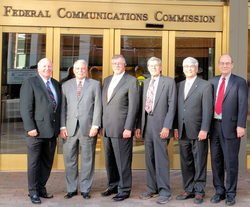

 Sponsored by
Sponsored by 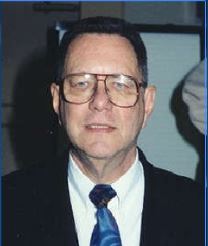 nstitute in Indiana. Rinaldo was a cofounder and served as president of the Amateur Radio Research and Development Corporation (AMRAD). His first association with ARRL was an article, "Amateur Radio in the Computer Age," for the September 1979 edition of QST. Subsequently, he served in volunteer roles, among them as the first editor of QEX: The ARRL Experimenters' Exchange.
nstitute in Indiana. Rinaldo was a cofounder and served as president of the Amateur Radio Research and Development Corporation (AMRAD). His first association with ARRL was an article, "Amateur Radio in the Computer Age," for the September 1979 edition of QST. Subsequently, he served in volunteer roles, among them as the first editor of QEX: The ARRL Experimenters' Exchange.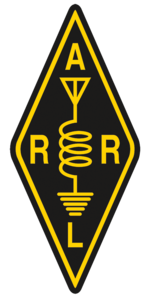 votes to 1,739 votes. In addition, challenger James Schilling, KG4JSZ, received 1,356 votes to win a three-way race for Vice Director, outpolling incumbent Joseph Tiritilli, N4ZUW, who received 1,209 votes, and challenger Jeff Stahl, K4BH, who received 1,281 votes. In 2016, Sarratt was the lone candidate for office, regaining the Director's seat after being narrowly unseated in 2013 when he stood for re-election. Tiritelli was the only candidate to fill the vacant Southeastern Division Vice Director's chair that same year.
votes to 1,739 votes. In addition, challenger James Schilling, KG4JSZ, received 1,356 votes to win a three-way race for Vice Director, outpolling incumbent Joseph Tiritilli, N4ZUW, who received 1,209 votes, and challenger Jeff Stahl, K4BH, who received 1,281 votes. In 2016, Sarratt was the lone candidate for office, regaining the Director's seat after being narrowly unseated in 2013 when he stood for re-election. Tiritelli was the only candidate to fill the vacant Southeastern Division Vice Director's chair that same year.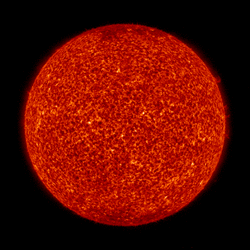 December 14 - 17; 12, 10, 8, and 8 on December 18 - 21; 5 on December 22 - 29; 8 on December 30 - 31; 5 on January 1 - 3; 8 on January 4; 5 on January 5 - 8; 6 on January 9; 5 on January 10 - 13; 12, 10, 8, and 8 on January 14 - 17, and 5 on January 18.
December 14 - 17; 12, 10, 8, and 8 on December 18 - 21; 5 on December 22 - 29; 8 on December 30 - 31; 5 on January 1 - 3; 8 on January 4; 5 on January 5 - 8; 6 on January 9; 5 on January 10 - 13; 12, 10, 8, and 8 on January 14 - 17, and 5 on January 18.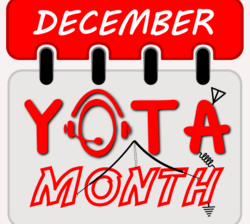 the Americas, VE7YOTA will be on the air from Canada. XR2YOTA in Chile has been added to the list of youth stations in the Americas for YOTA Month. Young hams in other countries may also join in. Listen for other YOTA Month stations with "YOTA" suffixes.
the Americas, VE7YOTA will be on the air from Canada. XR2YOTA in Chile has been added to the list of youth stations in the Americas for YOTA Month. Young hams in other countries may also join in. Listen for other YOTA Month stations with "YOTA" suffixes.(1).jpg)
 Dayton Hamvention
Dayton Hamvention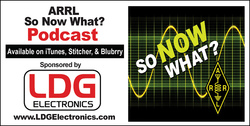 ARRL is inviting listeners of the
ARRL is inviting listeners of the .JPG) Just after announcing the release of WSJT-X version 2.1.1, the WSJT Development Group issued a second bug-fix release, version 2.1.2. WSJT-X is the free software suite that includes the FT4 and FT8 protocols. According to the developers, an error in the code broke the WSJT-X rig control features for certain Icom radios. The
Just after announcing the release of WSJT-X version 2.1.1, the WSJT Development Group issued a second bug-fix release, version 2.1.2. WSJT-X is the free software suite that includes the FT4 and FT8 protocols. According to the developers, an error in the code broke the WSJT-X rig control features for certain Icom radios. The 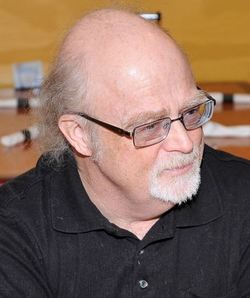 AMPRNet Cofounder Brian Kantor, WB6CYT, of San Diego, California, has died unexpectedly. He retired 2 years ago after 47 years of service on staff at the University of California, San Diego. Kantor and Phil Karn, KA9Q, founded AMPRNet -- the TCP/IP over amateur radio network -- in the 1980s, and Kantor continued to manage it until his death. He recently created and served as chair and CEO of Amateur Radio Digital Communications (
AMPRNet Cofounder Brian Kantor, WB6CYT, of San Diego, California, has died unexpectedly. He retired 2 years ago after 47 years of service on staff at the University of California, San Diego. Kantor and Phil Karn, KA9Q, founded AMPRNet -- the TCP/IP over amateur radio network -- in the 1980s, and Kantor continued to manage it until his death. He recently created and served as chair and CEO of Amateur Radio Digital Communications (







